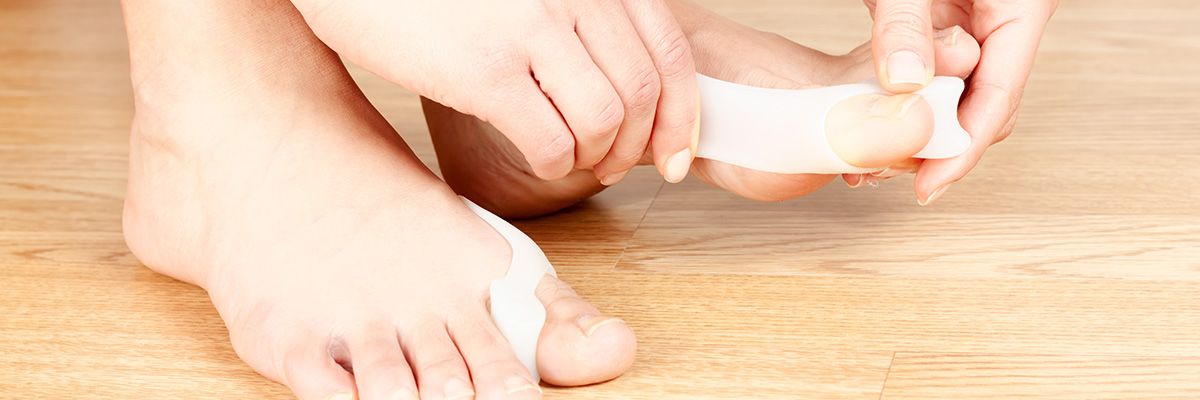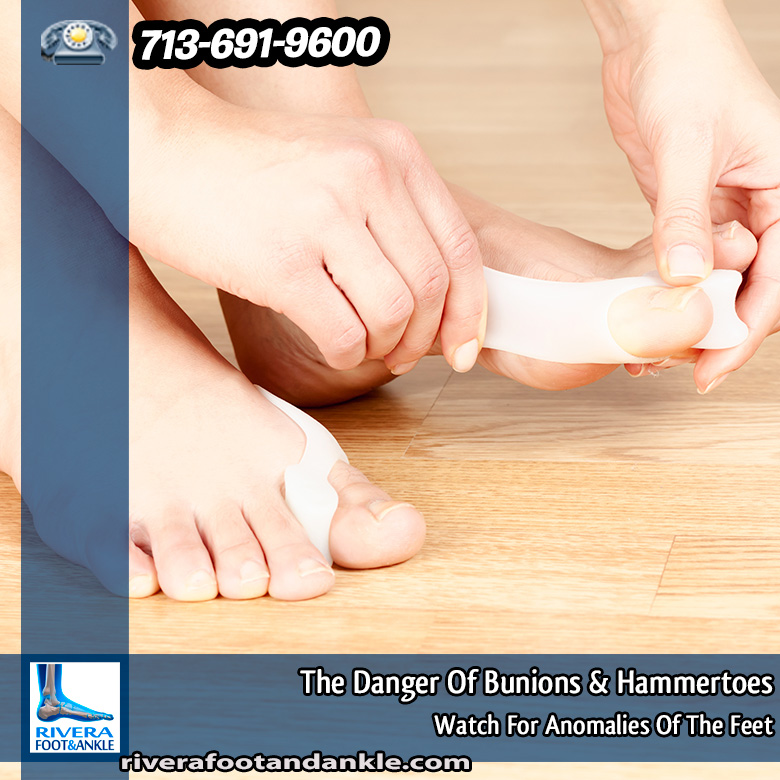
The Danger Of Bunions & Hammertoes
Watch For Anomalies Of The Feet
Bunions are a sometimes painful dislocation of the 1st metatarsophalangeal joint or 5th metatarsophalangeal joint that occurs primarily in shod or shoe-wearing populations. There have been many suggested causes of bunions, but the one cause that has been shown to be consistently reversible is the tapering toe boxes on most conventional footwear available to shoe wearing people.
Tapering toe boxes have a long history of standard inclusion in most shoe models, including most athletic models. The unfortunate side effect of the tapered forefoot shape of our footwear is that it holds our toe bones and joints in an unnatural proximity to one another, forcing the great toe into the space that should be occupied by the second toe, to create the classical bunion deformity. The tailor's bunion, on the outside of the foot, is created when the fifth toe is forced in under the fourth toe, and the head of the fifth metatarsal is forced into the outer aspect of the shoe, sometimes causing pain, swelling or bursa formation.
Unfortunately the taper of the toe boxes on most footwear available in America begins at the metatarsophalangeal joints, instead of at the ends of the toes, where the natural forefoot shape is at its widest. The only opportunity to see the natural shape of a human forefoot in America is in the newborn infant, or in the rare individual that grew up barefoot. Growing up without shoes keeps the shoe from pushing the great toe against the second toe, which is unnatural. The fifth toe is correspondingly not forced into the space occupied by the fourth toe, in the unshod state.
Growing up barefoot is a commonality in many parts of the world. These societies that don’t routinely wear shoes, rarely demonstrate the common forefoot deformities encountered in America, such as bunion, tailor's bunion, and hammertoe deformity.
Hammertoes are another forefoot deformity that can take a walker out of their activity. Hammertoes generally represent a tendon imbalance in the toes caused by one of the toe tendons getting an advantage over another toe tendon. Most commonly, it is one or all of the long extensor tendons on the top of the foot that gets an advantage over one or all of the flexor tendons on the bottom of the foot, to cause the first joint in the toe to be elevated above the ground. Most she wearing people chronically alter the delicate balance that co-exists amongst the toe tendons whether they know it or not.
This occurs because most footwear has heel elevation and a feature called toe spring, which holds the ends of the toes above the ground, in relation to the ball of the foot. These two features, coupled with the tapering toe boxes mentioned above, are responsible for the development of most hammertoe and bunion deformities. Hammertoes generally cause walkers to experience pain and dysfunction in three distinct areas: 1) One the top of the contracted joint, known as the proximal interphalangeal joint, due to callus buildup or bursa formation that occurs from the toe joint now rubbing against the top of the toebox of the shoe; 2) One the tip of the toe, since now there is an unnatural bend in the toe, which causes pressure on the end of the toe. This is a problem because the skin on the end of the toe is not as strong and resilient as the skin on the bottom of the toe; 3) Under the ball of the foot. When a toe becomes hammered, also termed contracted, it unfortunately puts downward pressure on the metatarsal bone, causing pain, swelling, and sometimes callus formation.
Source: nwfootankle
RIVERA FOOT & ANKLE: At Orlando H.Rivera DPM, our priority is to deliver quality care to informed patients in a comfortable and convenient setting. When you have problems with your feet, you need to turn to a podiatrist who listens and responds… an experienced doctor who knows the field and can effectively diagnose and treat your needs… a friendly physician who counsels you on the best ways to maintain and improve your health. Our physician(s) meet all these criteria. Plus, you benefit from a dedicated team of trained professionals who give you the individualized attention you deserve.

Foot and Ankle Podiatry
Keywords: Foot and Ankle, Dr. Orlando Rivera, Advanced Foot & Ankle Specialist, Foot and Ankle Podiatry, Houston Foot & Ankle Surgical, Treatment of Foot and Ankle, Foot & ankle specialists, Podiatrist in houston, podiatrist in houston, Orlando H.Rivera DPM, Houston Foot Doctor, Foot and Ankle Surgeon Houston, Ankle and Foot Specialist Houston, Podiatrist Houston, Foot Pain Houston



